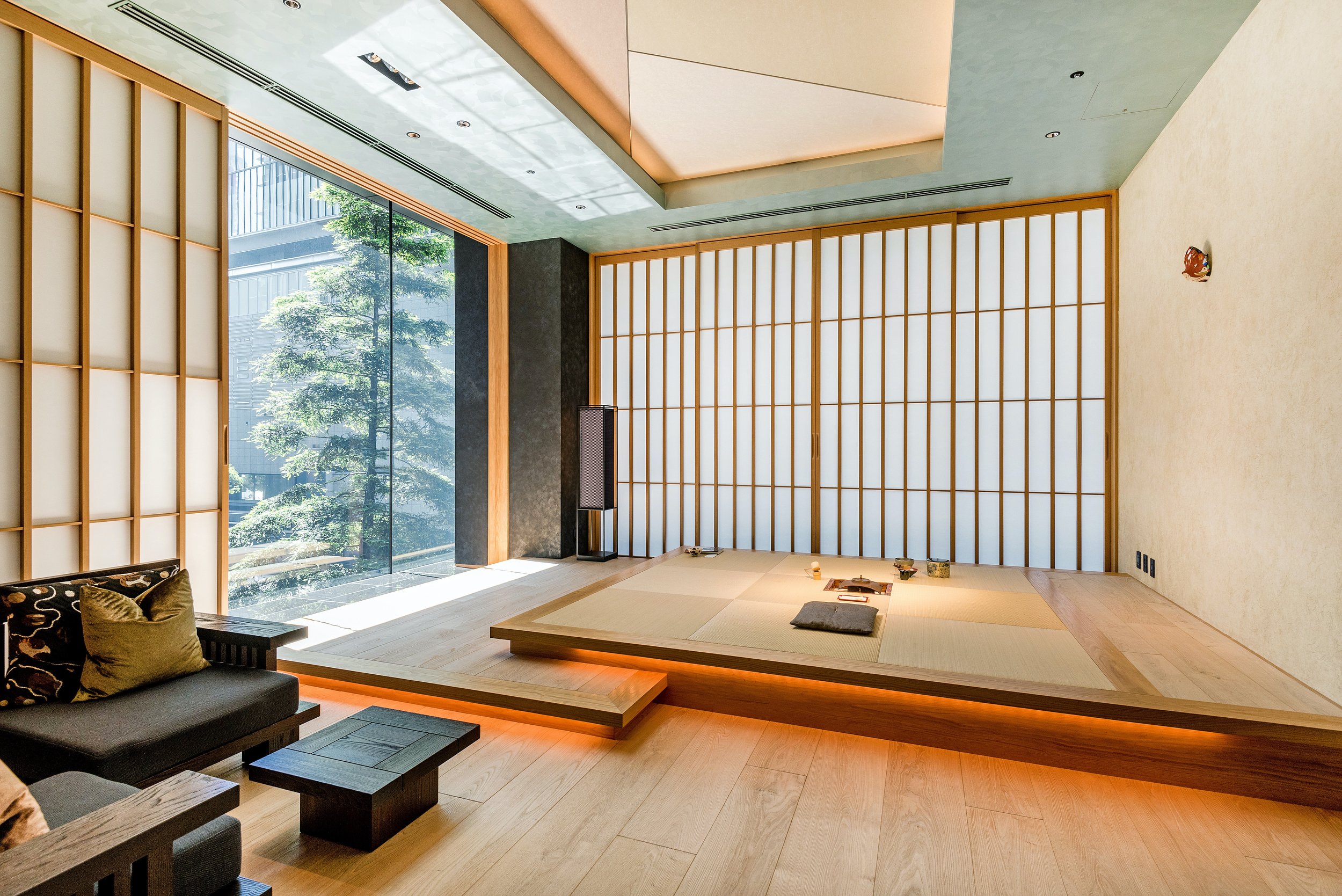Japandi Interior Design: The Ultimate Guide
Japandi interior design is the latest trend and it is gaining popularity among homeowners in recent years. As the name suggests, Japandi is a fusion of two design styles: Japanese and Scandinavian. These styles are known for their minimalism, functionality, and emphasis on natural materials.
The term "Japandi" was coined by designers who saw the similarities between these two styles and decided to combine them to create a new aesthetic. The result is a unique and harmonious blend that creates a tranquil and inviting atmosphere in any space. If you're interested in bringing this style into your home, this comprehensive guide will cover everything you need to know about Japandi interior design.
Here is an overview of the topics we will cover in this guide:
What is Japandi Interior Design
Japandi Interior Design is a combination of Japanese and Scandinavian design styles which emerged in the 2010s. It brings together the functional, clean lines of Scandinavian design with the simplicity and minimalism of Japanese design. Japandi emphasises on the importance of space and natural elements, creating a calming and peaceful environment in your home.
Characteristics of Japandi Interior Design
Japandi is all about creating harmony, balance, and tranquillity in your living space, using a minimalist approach. Some of the key characteristics include:
Minimalism: This design style embraces minimalism, with clean lines, simple geometric shapes and a focus on negative space. This simplicity creates a sense of calm and order, and allows the natural materials to take centre stage.
Natural materials: Japandi design often features natural materials like wood, bamboo, rattan, stone, and linen. These materials bring a sense of nature indoors, which is an important aspect of Japanese design.
Neutral colours: Neutral colours are the hallmark of both Japanese and Scandinavian design styles. Likewise, the colour palette of Japandi is typically in earthy muted tones, with shades of beige, grey, and white.
Functionality: With a focus on function over form, this means that furniture and decor accessories should serve a practical purpose, rather than being purely decorative.
Japanese aesthetics: Incorporating Japanese elements such as paper lanterns, shoji screens, tatami mats, and bonsai trees. These elements can help to bring a sense of traditional elegance to the space and create a connection to nature.
Materials and Colours Used in Japandi Interior Design
Here are some materials and colours that are commonly used in Japandi Interior Design:
Natural materials: Japandi style emphasises the use of natural and sustainable materials like wood, bamboo, rattan and linen. These materials bring warmth and texture to your space, creating a cosy and inviting atmosphere.
Neutral colours: The colour palette is often neutral, with a focus on earthy tones such as beige, grey, and white. These colours are often used as a backdrop to highlight natural textures and materials used in the design.
Accents of muted colours: Soft muted colours such as light blue, blush pink, and pale green are also used to add a touch of warmth and softness to the space.
Furniture and Lighting in Japandi Interior Design
Furniture and lighting play an important role in Japandi Interior Design. Here are some tips on furniture and lighting in Japandi style:
Furniture: The furniture pieces are typically low slung, with clean lines and minimal ornamentation. Natural materials such as wood, bamboo, and linen are often used in Japandi furniture to bring warmth and texture to the space.
Zen-inspired accessories: Japandi style draws inspiration from Japanese Zen philosophy, so incorporate Zen-inspired accessories like incense burners or ceramic tea sets to add a touch of tranquillity to your home.
Lighting: Maximise natural light in the space by using sheer curtains or blinds. Use soft, warm light to create an inviting atmosphere.
How to Incorporate Japandi Interior Design into Your Home
Incorporating Japandi Interior Design into your home is easy with these tips:
Declutter your space: Remove unnecessary items and keep only what you need. Leave some negative spaces to create a calming atmosphere.
Choose a neutral colour palette: Use neutral colours such as beige, white, and grey with accents of muted colours like pale green or pastel blue for depth and contrast.
Focus on natural materials: Opt for furniture and decor items made from natural materials such as a wooden coffee table or a bamboo rug.
Opt for functional pieces: When selecting furniture and decor items, prioritise functionality over form. Choose pieces that serve a purpose such as handcrafted ceramics, woven baskets, or some plants to add a touch of greenery to your space.
Incorporate natural light: This can be achieved by using sheer curtains, avoiding heavy window treatments, and choosing furniture that doesn't block natural light.
Add Japanese Elements: Add Japanese-inspired decor elements such as shoji screens, tatami mats, and bonsai trees to your space.
Japandi-inspired Design Ideas for Various Rooms at Home
Here are some Japandi-inspired design ideas for various rooms:
Living Room: Create a serene and inviting space by incorporating natural materials like wood and bamboo in furniture and decor. Stick to a neutral colour palette with pops of earthy tones such as forest green or terracotta. Use minimalist decor and consider incorporating Japanese-inspired elements such as shoji screens, or tatami mats.
Bedroom: Keep the bedroom minimalistic and clutter-free. Choose a bed with low-profile frame like a platform bed, and use natural linen or cotton bedding. Use a neutral colour palette with accents of green or blue to promote relaxation. For a touch of nature, add a potted plant or a bamboo ladder to hang clothes or accessories.
Kitchen: Create a calming and functional space by choosing simple, streamlined kitchen cabinets and a simple colour palette with pops of natural wood. Use open shelving for storage and to display favourite cookware and dishes. Incorporate Japandi style by adding a wooden cutting board, ceramic plates or bamboo utensils.
Bathroom: Create a serene and zen bathroom by using natural materials like stone, wood, or bamboo in the flooring and cabinetry. Add warmth with ambient lighting through candles or warm-toned bulbs. Consider having a deep soaking bathtub to complete the look.
Worried about overpaying for your home renovation?
Let AI be your superhero!
IDIT® Savings - AI Renovation Cost Saver
With this FREE innovative AI tool, you can scan renovation quotes with ease and identify cost-saving measures that won't compromise on quality.
You can now enjoy a successful renovation with additional savings from the savings report.
Conclusion
Japandi interior design is more than just a trend, it's a lifestyle choice that can help you create a serene and mindful home. The Japandi style is characterised by its minimalistic approach to design, incorporating elements from both Japanese and Scandinavian cultures to create a unique and harmonious aesthetic. By blending traditional elements from these two cultures, Japandi interiors have become known for their simplicity, functionality, and sense of calm.
To achieve the Japandi look in your own home, focus on simplicity and natural materials. Choose neutral colours and opt for functional furniture with clean lines and minimal embellishments. By adopting the principles of Japandi interior design, you can create a home that is not only aesthetically pleasing, but also transform your home into a sanctuary where you can relax, recharge, and find tranquillity.
Frequently Asked Questions
-
Here are some benefits of Japandi style:
Encourages mindfulness: Japandi design promotes a mindful and intentional way of living, where only the most essential and beautiful items are kept in the home. Japandi style also incorporates elements of Zen design, which emphasises on a meditative and calming environment. This can have a positive impact on mental health and wellbeing.
Promotes sustainability: The use of natural materials and focus on longevity in Japandi design promotes a more sustainable way of living. By investing in high-quality, long-lasting items, you can help reduce your carbon footprint and create a more eco-friendly home.
Timeless design: Japandi style is a blend of Japanese minimalism and Scandinavian design, both of which are known for their timelessness. Unlike trend-focused designs that may quickly go out of style, Japandi design is likely to remain relevant and beautiful for years to come.
Easy to maintain: The minimalist nature of Japandi design means that there are fewer items to clean and maintain. This can be particularly beneficial for those with busy schedules or who prefer to spend their time on other activities.
-
Japandi Interior Design is unique and here's how it differs from other design styles:
Minimalist: Japandi design has some elements of minimalism, such as the use of simple and clean lines, a focus on functionality, and the elimination of clutter. However, Japandi is not strictly a minimalist style and incorporates warmth and cosiness through the use of traditional Japanese design, such as natural materials, handmade items, and the use of textures.
Scandinavian: Japandi and Scandinavian design share similarities such as their minimalist aesthetic and use of natural materials. However, Japandi incorporates more traditional Japanese design elements and craftsmanship, while Scandinavian design is inspired by the simplicity and functionality of Nordic design. Japandi uses warmer earth tones and natural textures, whereas Scandinavian design often incorporates cooler colours such as whites and pastel tones.
Wabi-Sabi: Japandi and Wabi-sabi are both inspired by traditional Japanese design, but they have different focuses. Wabi-sabi emphasises the beauty of imperfection, asymmetry, and tends to be more rustic and earthy. Japandi incorporates Scandinavian design principles, which emphasises on clean lines and tend to be more refined and elegant.
-
While both Muji and Ikea focus on minimalist and functional design, they have different design philosophies. Muji leans more towards Japandi style with a focus on clean lines, muted colours, and natural materials such as word and cotton. While Ikea has a more distinct Scandinavian design with greater use of brighter colours and playful designs. Additionally, Muji's designs tend to be more sophisticated and expensive as it is often made from higher-quality materials, while Ikea's designs are more modular and customisable, accessible to a wider range of consumers.
-
Absolutely! Japandi design is perfect for small spaces as it prioritises functionality and simplicity. When designing a small space with Japandi style in mind, it's important to maximise natural light, use light colours, and select furniture that has a dual purpose, such as a bed with storage underneath. Also, be sure to declutter your space and avoid over-accessorising, as this can make a small space feel cramped.
-
The renovation cost of Japandi Interior Design can vary greatly depending on the materials used, the size of the space, and the complexity of the design. However, one of the key principles of Japandi style is simplicity, so you don't need to break the bank to achieve a beautiful Japandi home. You can invest in high-quality, natural materials such as wood, stone, and linen, and focus on minimalistic designs. In addition, you can find out how you can save more using our “AI Renovation Cost Saver - IDIT® Savings” tool.







